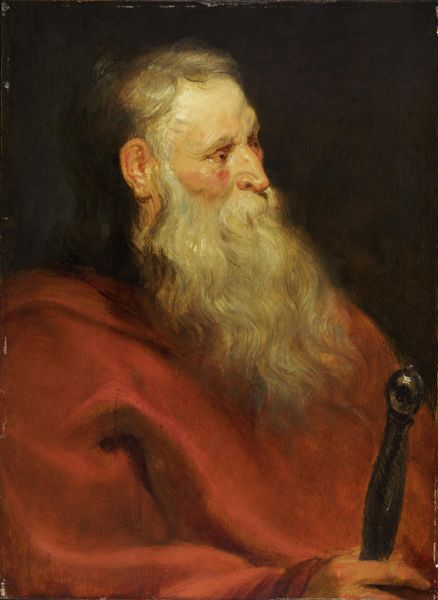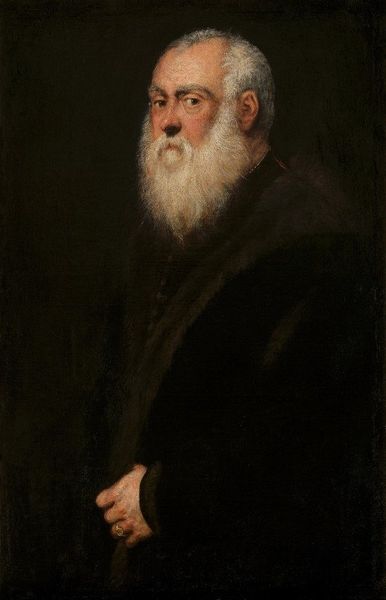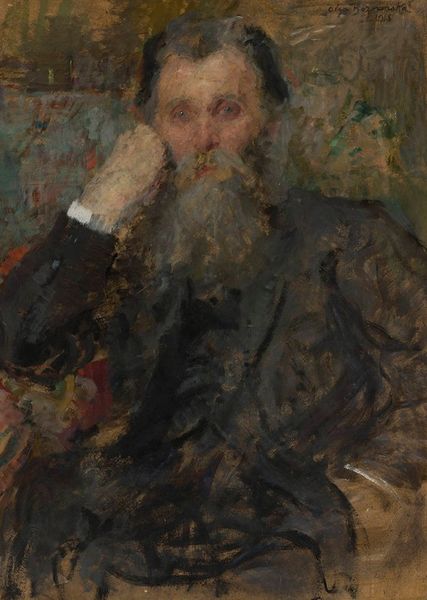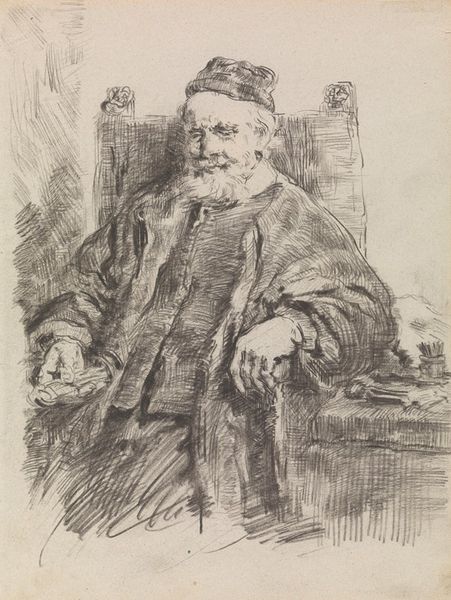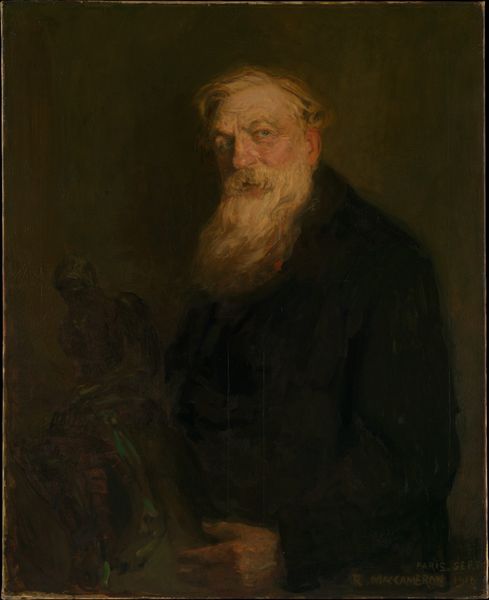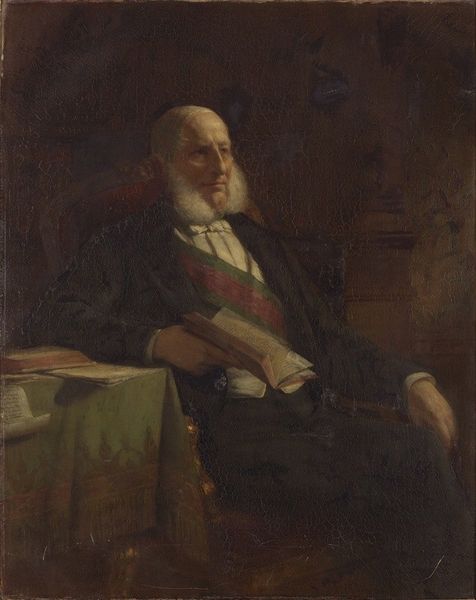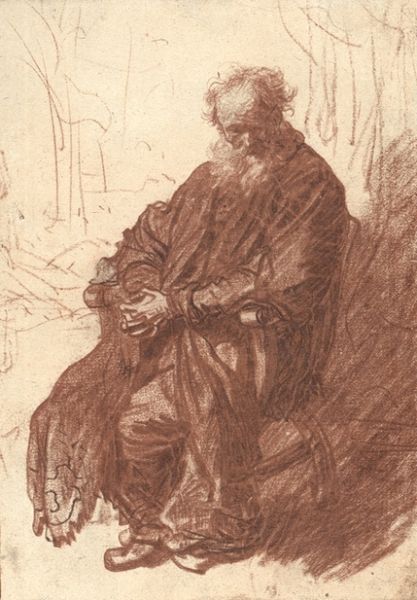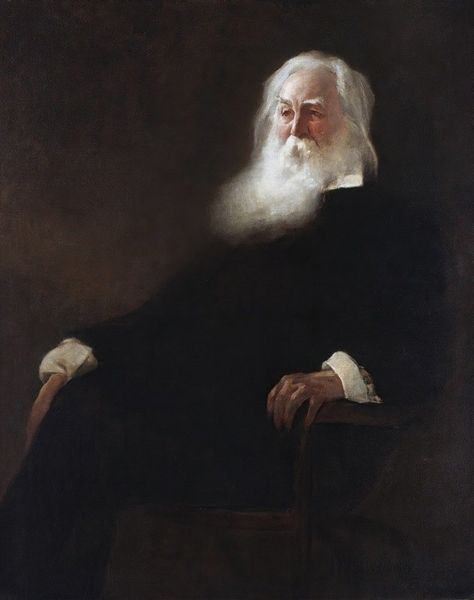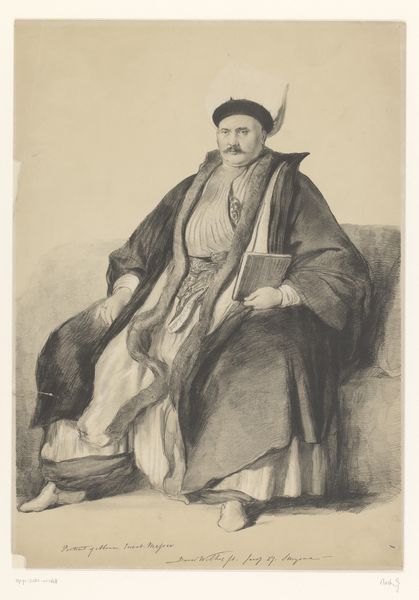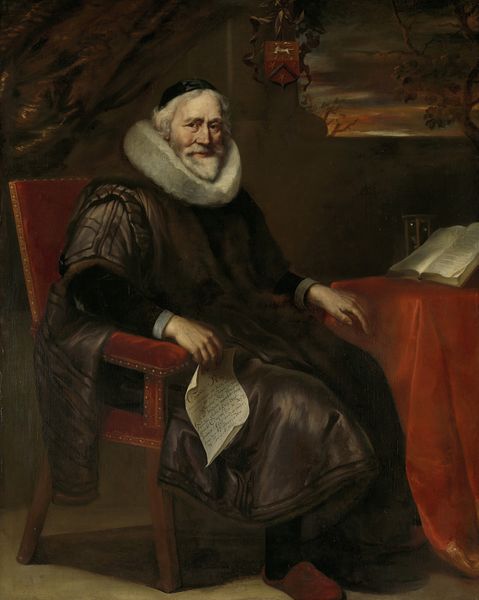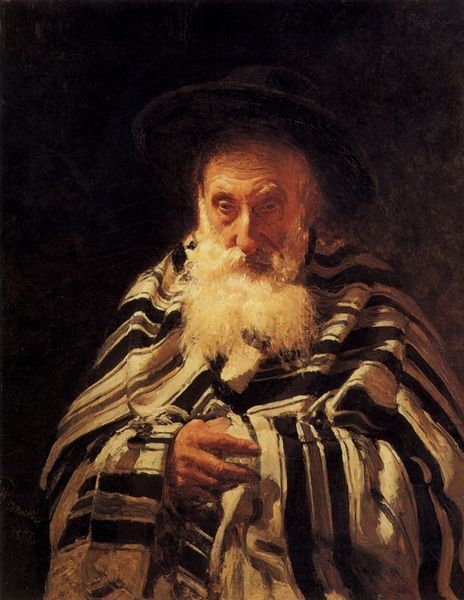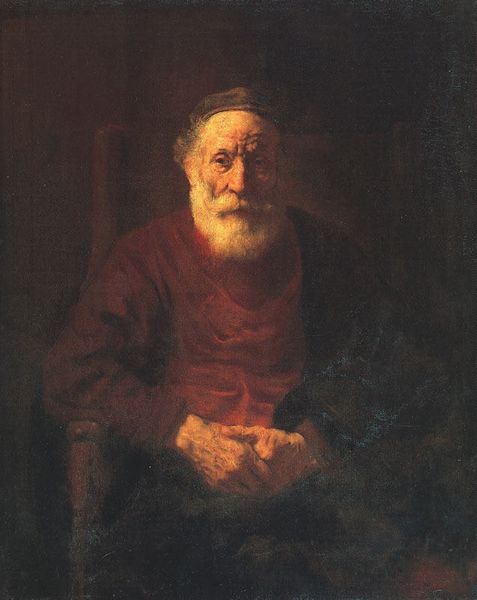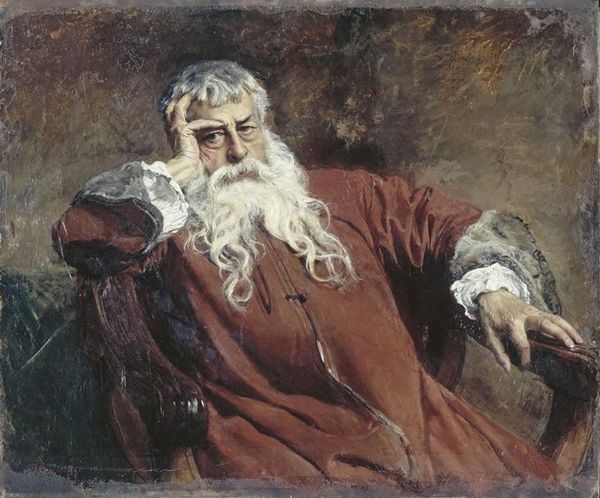
Dimensions: support: 610 x 508 mm
Copyright: CC-BY-NC-ND 4.0 DEED, Photo: Tate
Editor: This is Sir David Wilkie's portrait of "His Highness Muhemed Ali, Pacha of Egypt." The textures seem so smooth and soft, especially in the clothing. What visual elements strike you most in this piece? Curator: The most compelling aspects reside in the calculated deployment of chiaroscuro and the interplay between the textures. Notice how Wilkie uses light to articulate the sitter's face, drawing attention to its planes and volumes. Editor: The sword stands out—its shape and golden hue are very striking. Does that draw focus away from the subject's face? Curator: While the sword is undeniably present, observe how its placement and angle guide the eye back towards the central figure, reinforcing his commanding presence within the pictorial space. Do you see that? Editor: I do now! Thank you. I see so much more through the arrangement of light and form. Curator: Indeed. Appreciating the formal qualities of this work enhances our understanding of its overall impact and intent.
Comments
tate 8 months ago
⋮
http://www.tate.org.uk/art/artworks/wilkie-his-highness-muhemed-ali-pacha-of-egypt-n04276
Join the conversation
Join millions of artists and users on Artera today and experience the ultimate creative platform.
tate 8 months ago
⋮
This is a portrait of the Albanian walī (ruler) of Egypt, Muhammad Ali (1769–1849). He was a commander in the Ottoman army and had seized power after a civil war. Muhammad Ali oversaw dramatic reforms of Egyptian military, economy and culture. He commissioned this work from Wilkie. Here, he presents himself in traditional Islamic dress but sitting in a European chair and wearing a fez rather than the traditional turban. Wilkie met Muhammad Ali in Egypt on his return journey from travels in the Middle East. This was Wilkie’s last painting, he fell ill and died on his journey back to Britain. Gallery label, October 2023
